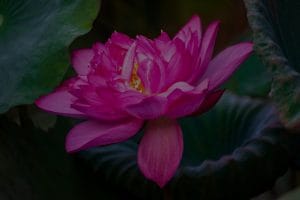**Abstract:** Discover how to select the perfect feng shui ornaments tailored to your lifestyle. This guide will help you harmonize your space and enhance your well-being through mindful choices.
Understanding Feng Shui Principles
Feng shui, the ancient Chinese practice of arranging your environment, focuses on the flow of energy, or “chi.” By incorporating feng shui ornaments into your space, you can create a harmonious atmosphere that promotes positive energy and well-being. Understanding the foundational principles of feng shui is essential before diving into the selection process. Key elements include the five elements—wood, fire, earth, metal, and water—each representing different aspects of life. Balancing these elements in your home or office can lead to a more fulfilling and prosperous life.
Identifying Your Intentions
Before choosing feng shui ornaments, reflect on what you hope to achieve. Are you seeking love, prosperity, health, or personal growth? Each ornament serves a unique purpose and can amplify specific intentions. For instance, a pair of mandarin ducks symbolizes love and fidelity, while a wealth vase attracts abundance. By identifying your intentions, you can select ornaments that resonate with your goals, ensuring a more personalized approach to your space.
Choosing the Right Materials
The materials used in feng shui ornaments play a significant role in their effectiveness. Natural materials like wood and stone are believed to have grounding properties, while metals can enhance clarity and focus. Crystals, on the other hand, are powerful energy amplifiers. For example, rose quartz fosters love and compassion, while citrine attracts wealth. When selecting ornaments, consider the materials that align with your intentions and the energy you wish to cultivate in your environment.
Placement Matters
The placement of feng shui ornaments is crucial to their effectiveness. Each area of your home corresponds to different aspects of life, known as the Bagua map. For instance, placing a money tree in the wealth corner of your home can enhance financial prosperity. Similarly, positioning love-related ornaments in the relationship corner can attract romantic energy. Take the time to study the Bagua map and strategically place your chosen ornaments to maximize their potential benefits.
Color and Design Considerations
Colors have a profound impact on our emotions and energy levels, making them a vital aspect of feng shui. Each color corresponds to different elements and energies. For example, red symbolizes passion and vitality, while blue promotes calmness and tranquility. When selecting feng shui ornaments, consider the colors that align with your intentions and the overall aesthetic of your space. Additionally, the design of the ornament should resonate with you personally, as it will be a focal point in your environment.
Integrating Feng Shui into Your Lifestyle
Feng shui is not just about placing ornaments; it’s about creating a lifestyle that promotes balance and harmony. Incorporate mindfulness into your daily routine by being aware of your surroundings and the energy they emit. Regularly assess your space and make adjustments as needed. This ongoing practice will help you stay aligned with your intentions and maintain a positive energy flow in your life. Remember, feng shui is a journey, not a destination.
Conclusion: Embrace Your Unique Path
Choosing the right feng shui ornaments for your lifestyle is a deeply personal endeavor. By understanding the principles of feng shui, identifying your intentions, selecting appropriate materials, and considering placement and design, you can create a harmonious space that reflects your desires. Embrace the journey of enhancing your environment, and let your chosen ornaments serve as powerful tools for transformation and growth. With mindful selection and placement, you can unlock the potential of feng shui in your life.










